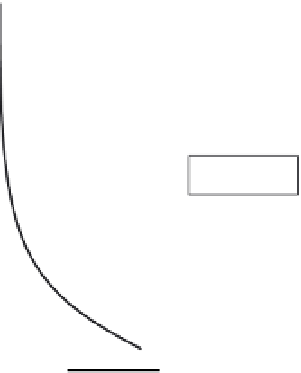Biology Reference
In-Depth Information
Cerebral cortex
Sleep
Monoaminergic systems
Wake
Histamine, Dopamine, Noradrenaline, Serotonin
Cholinergic systems
Acetylcholine
SLEEP
Wake
GABA & Galanin
Mid/Hind-Brain
Neurons
Wake
systems
NREM
Sleep
REM
Sleep
Atonia
Orexin
Sleep
drivers
Lateral
hypothalamus
VLPO
GABA & Galanin
Figure 11.1 During wake orexin neurons in the lateral hypothalamus project to and
excite (
þ
) monoaminergic and cholinergic neurons. These neurotransmitters drive
wakefulness and consciousness within the cortex. The monoaminergic neurons also
inhibit (
) the ventrolateral preoptic nuclei (VLPO). During sleep, circadian and homeo-
inhibit the orexin neurons in the lateral hypothalamus and the aminergic and choliner-
gic neurons (
). The NREM-REM flip/flop every 70-90 min is driven by a network of neu-
rons in the mid- and hind-brain. During REM sleep aminergic neurons remain inhibited,
but cholinergic neurons are activated (
). REM-on neurons project to the spinal cord
þ
and drive muscle paralysis (atonia).
assesses sleep-wake behavior separately for work and free days. This epide-
miological approach has shown that both sleep timing and duration are
greatly challenged by work and school schedules or other social events.
To align their sleep and wake times with social obligations, 80% of the
people use sleep medication at night and stimulants to drive wakefulness
during the day.
4
How individuals accommodate their endogenous sleep need between
social constraints and biological timing depends on how their circadian clock
embeds itself into the light-dark cycle of the environment (entrainment),
5
































Search WWH ::

Custom Search